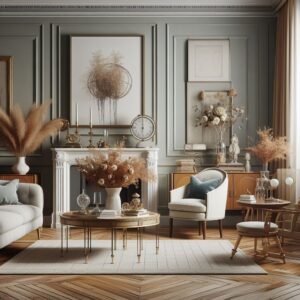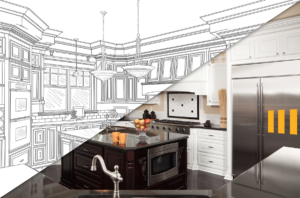The Art of Minimalism: How Minimalist Design is Shaping the Future
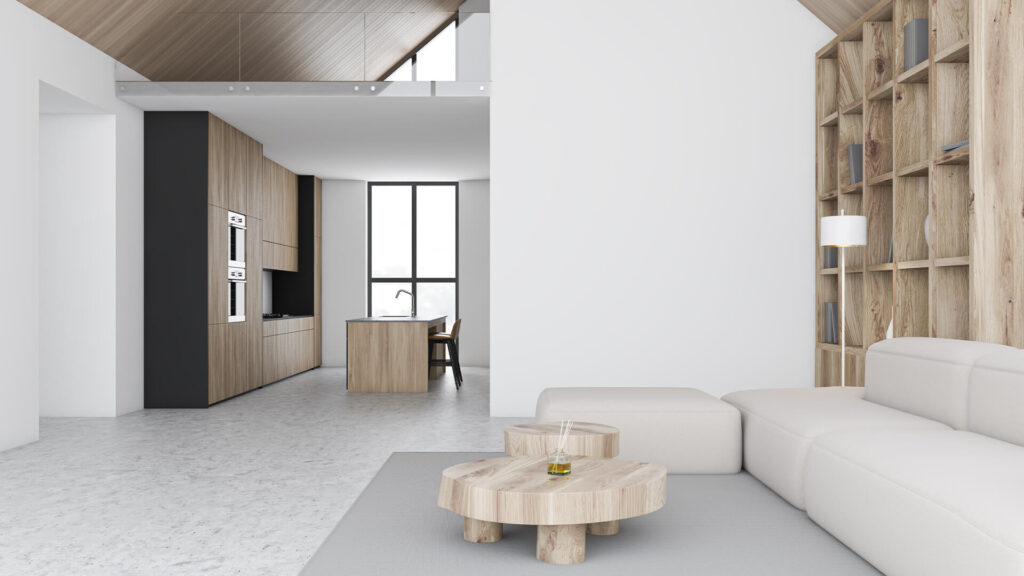
In a world where information and sensory stimuli bombard us constantly, the allure of minimalism has never been stronger. Minimalist design, with its focus on simplicity and elegance, is not just a passing trend but a philosophy that’s shaping the future of art, architecture, and even lifestyle. From the sleek lines of modern architecture to the user interfaces of our favorite gadgets, minimalism is leaving a profound impact. This article delves into the profound impact of minimalist design and its influence on various aspects of our lives.
Embracing Simplicity: A Paradigm Shift in Design

Minimalism in design is a reflection of the larger cultural shift towards simplicity and decluttering. We live in a world filled with noise, both auditory and visual. In this cacophony, minimalism offers a respite. It’s the art of decluttering our surroundings, whether it’s our living space, digital interfaces, or the products we use daily. This shift in design philosophy isn’t just about aesthetics; it’s about enhancing functionality and usability.
In the realm of architecture, minimalist design often features clean lines, open spaces, and a focus on natural light. The use of materials is deliberate and essential, without unnecessary adornments. This design ethos is not limited to buildings; it extends to interior spaces, influencing how we arrange our homes and workplaces. The goal is to create spaces that are not just visually pleasing but also practical and conducive to well-being.
Minimalism has also made significant inroads into the world of technology. Tech companies are increasingly adopting minimalist design principles in their products. Consider the evolution of smartphones. Early mobile phones were bulky and cluttered with buttons. Today, we have sleek, minimalist smartphones with a focus on touch screens and clean interfaces. This shift towards simplicity has made technology more accessible to a broader audience, as user interfaces become more intuitive and less intimidating.
Minimalism in Art: A Profound Impact
Art has always been a reflection of its times, and minimalist art is no exception. This movement, which emerged in the mid-20th century, challenges traditional notions of art. In minimalist art, less is more. It’s about reducing the elements to their essential forms, often using geometric shapes and a limited color palette.
Minimalist art invites viewers to engage with the artwork on a deeper level. Without the distractions of intricate details or elaborate ornamentation, one can focus on the core of the artwork. The use of space in minimalist art is as important as the physical forms, creating a sense of balance and harmony. Much like minimalist art, which encourages contemplation and introspection, wrinkle-reducing skincare encourages individuals to reflect on their skin’s health and vitality.
One of the most famous minimalist artists, Donald Judd, is renowned for his use of simple geometric shapes in his sculptures. His work exemplifies the idea that a single, well-placed object can convey profound meaning. Minimalist art, much like minimalist design, encourages contemplation and introspection.
Minimalism in Lifestyle: Less Clutter, More Fulfillment
The influence of minimalism extends beyond design and art; it permeates our daily lives. The concept of “less is more” has inspired people to declutter their physical spaces and adopt a minimalist lifestyle. This lifestyle is characterized by intentional living, where one focuses on what truly matters. The halal certification plays a vital role in this lifestyle, ensuring that the food and products people choose to include in their minimalist existence align with their values.
In a minimalist lifestyle, the emphasis is on experiences and relationships rather than material possessions. People are increasingly reevaluating their consumerist habits and opting for a more streamlined existence. By simplifying their lives, they seek a deeper sense of fulfillment.
While minimalism encourages simplicity and decluttering, it can also be a practical approach when dealing with unexpected crises, such as 911 water damage, by focusing on essential recovery and restoration needs.
Minimalism has also found its way into the fashion industry. The “capsule wardrobe” concept, where one maintains a small, versatile collection of clothing, is an embodiment of minimalist principles. This approach not only reduces decision fatigue but also promotes sustainability by discouraging fast fashion.
Minimalism has also influenced the fashion industry, with many individuals embracing simple, timeless pieces over extravagant designer clothing.
Challenges and Critiques
While minimalist design and lifestyle have garnered widespread acclaim, they are not without their challenges and critics. Some argue that minimalism can lead to sterility and lack of character, making spaces or objects feel cold and impersonal. Others critique it as a privilege only accessible to those who can afford it, as adopting minimalism often involves buying higher quality, longer-lasting items.
The Psychological Impact of Minimalism: Enhancing Mental Well-being
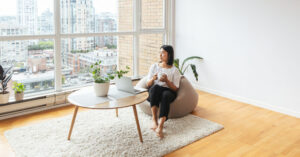
Beyond the aesthetic and functional aspects, minimalism also delves into the realm of psychology. It’s known to have a profound impact on mental well-being. In a world filled with constant distractions and information overload, minimalism offers a respite. It encourages mindfulness, which is essential for maintaining good mental health.
Integrating minimalism into your lifestyle is like using a roll off dumpster to efficiently declutter your surroundings, allowing you to discover the joy of a simpler, more organized life.
In minimalist spaces, there’s often a sense of tranquility that promotes relaxation and reduces stress. When your living environment is clutter-free, your mind can declutter as well. This simplicity can create a sense of calm and make it easier to focus on what truly matters.
Moreover, minimalism promotes the practice of letting go of the unnecessary. It invites individuals to assess their values and priorities. By decluttering their lives and focusing on what truly matters, people can reduce anxiety and increase their overall sense of contentment. The emphasis on experience over material possessions aligns with positive psychology, which highlights the importance of building meaningful connections and experiences for lasting happiness.
The best general surgeons often approach their work with a sense of minimalism, carefully removing only what is necessary to restore a patient’s health and well-being.
Minimalism in Education: Streamlined Learning for the Digital Age
Education is another realm where the principles of minimalism are taking root. With the advent of digital learning and online courses, it’s becoming increasingly important to present information in a clear and concise manner. Minimalist design in education prioritizes essential information and makes it easily accessible to learners.
In the world of e-learning, minimalism fosters a user-friendly experience. It means creating well-structured, clutter-free online courses that are easy to navigate. This approach enhances the learning process by reducing cognitive load, making it easier for students to grasp and retain information.
Minimalism in education isn’t limited to the digital realm. In traditional classrooms, it encourages educators to focus on key concepts, eliminating unnecessary information and fostering a deeper understanding of the subject matter. By doing so, it enables students to become critical thinkers and problem solvers, skills that are invaluable in the modern world.
Minimalism is not only about decluttering physical spaces; it’s also a philosophy that can simplify complex aspects of life, much like streamlining the intricate process of solar system service maintenance in Hillsborough.
The Impact of Minimalism on Sustainability: Less Waste, More Responsibility
In an age when environmental concerns have taken center stage, minimalism also plays a role in sustainability. The philosophy of minimalism aligns with the idea of reducing waste and promoting responsible consumption.
Minimalism extends its influence even to the world of firearm design, where sleek, uncluttered lines and a focus on functionality often lead to the use of minimalistic optic sights for enhanced accuracy.
A minimalist lifestyle often involves buying fewer but higher-quality products. This approach not only leads to less waste but also encourages a more sustainable approach to consumption. In essence, it counters the throwaway culture that has dominated consumer behavior for decades.
In the world of minimalism, even the choice of flavoring extracts is a deliberate and thoughtful process, where a few drops can infuse an entire dish with the essence of simplicity and taste.
Moreover, the decluttering aspect of minimalism promotes the idea of reusing and recycling. Instead of constantly acquiring new possessions, people are encouraged to repurpose and give new life to existing items. This not only reduces the strain on landfills but also lessens the need for the production of new goods, which can be resource-intensive and harmful to the environment.
Minimalism has even influenced the design of healthcare spaces, with clinics like the physical therapy in Austin centre adopting clean, uncluttered layouts to promote a sense of calm and well-being.
Minimalism in Technology: Balancing Convenience and Distraction
While minimalism in technology has brought about user-friendly interfaces, it has also raised important questions about how technology shapes our lives. The convenience of minimalist design in gadgets can sometimes come at a cost. With the rise of smartphones and social media, we are constantly bombarded with notifications and information.
Minimalism often embraces the beauty of simplicity, where even interior wood doors become an integral element of the overall design, showcasing the elegance of clean lines and natural materials.
The challenge lies in finding the right balance between minimalist design, which simplifies user interfaces, and the potential for distraction. Social media platforms, for example, are designed to be minimalist and easy to navigate. However, this simplicity can also make it easier for users to get lost in the endless scrolling and engagement with content, often at the expense of real-world interactions.
The solution lies in individual responsibility and mindful use of technology. Recognizing the potential for distraction, some people are adopting digital minimalism—a practice of deliberately limiting screen time and online engagement. By doing so, they aim to strike a balance between the convenience of technology and maintaining focus on more meaningful aspects of life.
Minimalism is not just about decluttering your physical space; it’s also about simplifying your daily life, from reducing unnecessary possessions to streamlining your routines, even something as practical as finding a reliable dryer cleaning service in Long Island to keep your home maintenance hassle-free.
Minimalism in Health and Wellness: Simplifying Self-Care
The principles of minimalism have also found their way into the world of health and wellness. In a society that often pushes for constant productivity and achievement, minimalism in self-care promotes the idea of simplifying one’s well-being routine.
Minimalism extends to all aspects of life, from decluttering your home to simplifying your daily routine, even down to choosing essential services like towing assistance in New Jersey residents are embracing the minimalist approach to streamline their lives.
For example, minimalism in diet encourages people to focus on consuming whole, unprocessed foods rather than navigating a complicated world of fad diets and supplements. It’s about recognizing that good nutrition doesn’t have to be complicated or expensive.
Minimalism in athletic nutrition emphasizes simplicity, often favouring natural creatine sources like red meat over complex supplement regimens to enhance physical performance.
In the realm of mental health, minimalism is linked to mindfulness practices and meditation. The minimalist approach to mindfulness encourages individuals to simplify their mental processes, focus on the present moment, and reduce the mental clutter that can lead to stress and anxiety.
Moreover, minimalism in wellness extends to fitness. Instead of complicated workout routines and expensive gym memberships, it promotes the idea of simple, effective exercise that can be done with minimal equipment. This approach makes fitness more accessible and encourages regular physical activity.
In the age of minimalism, many people find themselves reducing their impulse for excessive consumption, opting for a more intentional lifestyle that values experiences over the convenience of online shopping.
Minimalism and Future Innovations: A Harmonious Blend
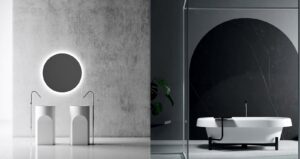
As we look to the future, the influence of custom banners, and minimalism on design, art, lifestyle, and various aspects of society is set to continue. Its emphasis on simplicity, decluttering, and intentional living aligns with the growing desire for sustainability, mental well-being, and meaningful experiences.
One area where minimalism is likely to have a significant impact is in the realm of architecture and urban planning. As cities grapple with issues like overcrowding and environmental sustainability, minimalist design principles can be used to create efficient and aesthetically pleasing living spaces. Compact, minimalist housing designs are already emerging as a solution to urban housing challenges.
The principles of minimalism are increasingly influencing web development in Chicago, where clean, intuitive interfaces and streamlined user experiences are becoming the standard for digital design.
In the field of transportation, minimalist design may also play a role. With the development of autonomous vehicles, the interior design of cars and public transportation systems is becoming a focus. Minimalist, user-friendly interfaces and layouts will likely be key to ensuring a smooth and stress-free experience for passengers.
In minimalism, even functional elements like pool fences are seamlessly integrated into the overall design, maintaining a sense of simplicity and aesthetic cohesion.
Conclusion
The art of minimalism, with its focus on simplicity, decluttering, and intentionality, is not just a design trend but a philosophy that permeates various aspects of our lives. From shaping the aesthetics of our surroundings to influencing how we learn, consume, and live, minimalism is leaving a profound impact. By embracing the principles of minimalism, we can create more aesthetically pleasing, functional, and meaningful environments and experiences. The future holds the promise of a harmonious blend of minimalism and innovation, guiding us toward a more intentional and sustainable way of living.
Minimalism also extends its philosophy of simplicity and mindful living to various aspects of life, including bonsai care, emphasizing the beauty of tending to these miniature trees with intention and grace.
